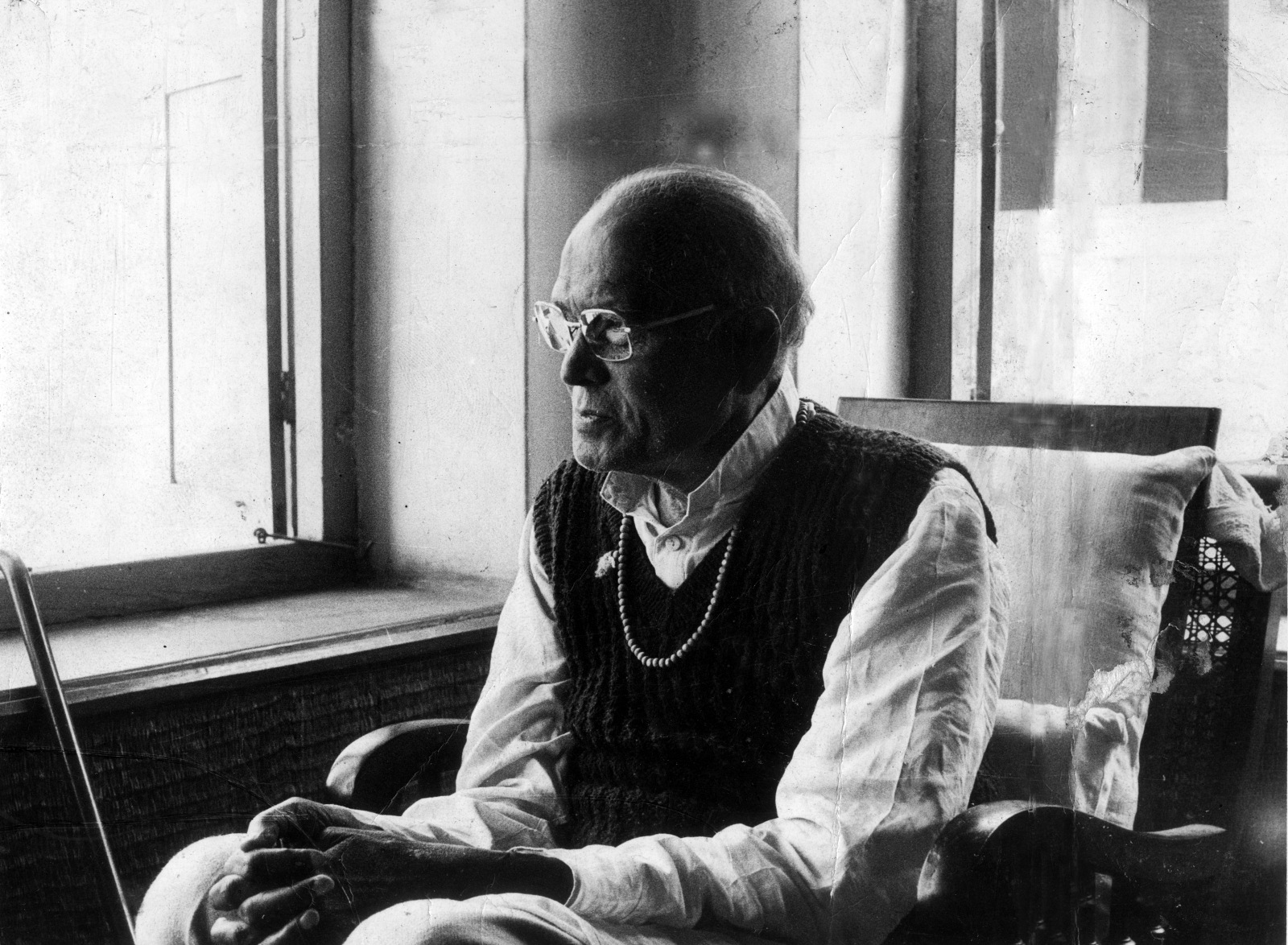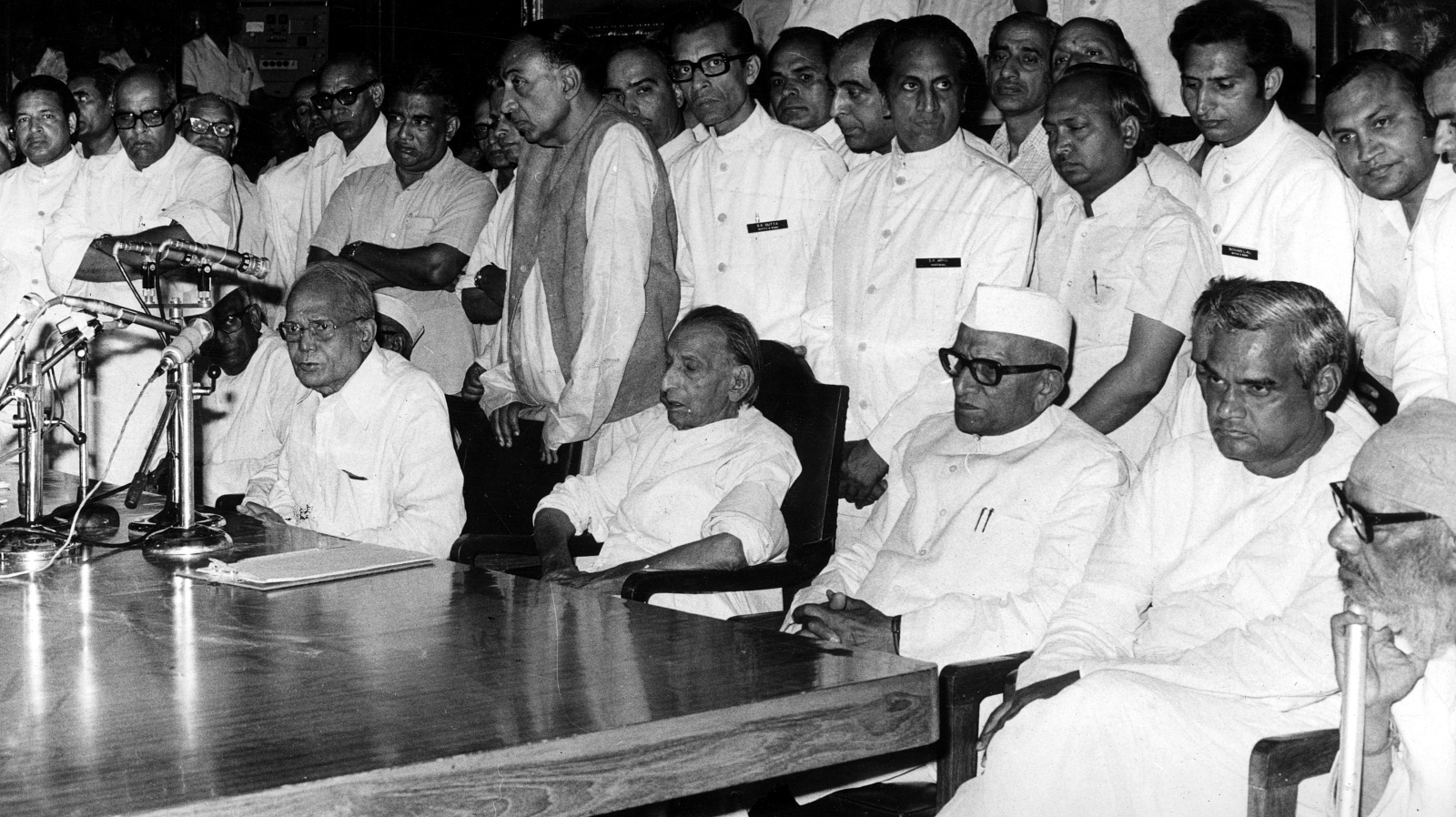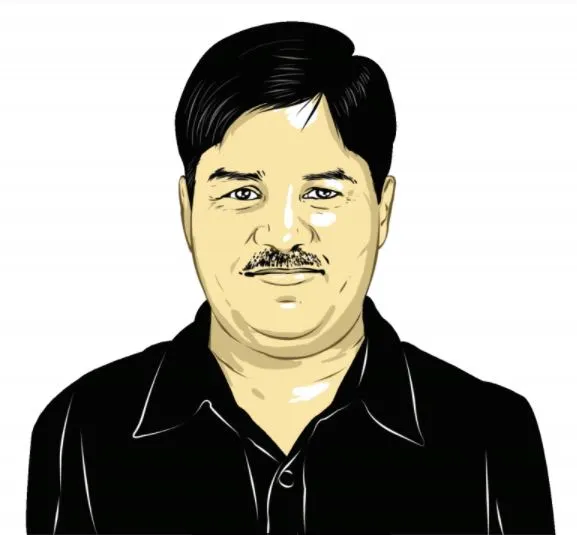Janata Party: The giant slayer slayed by own giants
How in the very origin of the front, comprising parties with conflicting ideologies and agendas coming together in opposition to Indira Gandhi, lay the seeds of its unravelling
 Former prime minister Morarji Desai addresses a Janata Party rally. Express Archive Photo
Former prime minister Morarji Desai addresses a Janata Party rally. Express Archive Photo Among the many political firsts of the Emergency was the unity it forged among parties of conflicting ideologies and agendas, which put their differences aside to take on Indira Gandhi and the Congress. The Janata Party experiment eventually proved as much a triumph of wills as a casualty of the same, but it set a template for coalitions for the years to come.
The coming together of four big and several smaller parties to form the Janata Party, its sweep of the polls held after Gandhi’s surprise decision to lift the Emergency in March 1977, the formation of a government led by Morarji Desai, and its quick collapse, all happened within a course of a couple of years. However, the many leaders who had their baptism by fire in those years emerged as among the country’s biggest regional satraps.
Run-up to Emergency
For several years leading up to the Emergency declaration, the Opposition had been trying to come together to take on the Congress. By then, the Congress had lost the aura of its role in the freedom struggle and suffered a split, while regional parties had started to emerge as alternatives.
In 1971, an alliance was formed by the Congress (O) (a splinter outfit of the Congress), Bharatiya Jana Sangh (BJS, a precursor of the BJP), Swatantra Party and Socialist Party. However, this union of small parties proved too weak against the Congress.
In the 1974 Assembly polls in Uttar Pradesh too, the Opposition tried for a joint front, but failed. Consequently, the Congress’s H N Bahuguna returned to power, amid allegations of booth-capturing and rigging.
Finally, in Gujarat, different parties contested together as the Janata Morcha and defeated the Congress in the state Assembly polls of June 1975. This was on the back of a student-led Gujarat Navnirman Andolan, whose tremors were felt across the country, but especially Bihar, where it paved the way for the Jayaprakash Narayan Movement.
 Jayaprakash Narayan was popularly known as JP or Lok Nayak. Express Archive Photo
Jayaprakash Narayan was popularly known as JP or Lok Nayak. Express Archive Photo
Days later, when the Emergency was declared, the Janata Morcha was a model on which an Opposition unity was sought. As many prominent leaders were put behind bars, those outside built on the Janata Morcha idea.
When they turned to an ailing Jayaprakash Narayan, or JP as he was known, for this, the veteran leader and freedom fighter stressed that the Opposition should ensure one joint candidate against the Congress in as many Lok Sabha seats as possible. In the days after the Allahabad High Court judgment disqualifying Gandhi as an MP, when speculation ran rife about what she would do next, senior leaders of the Bharatiya Lok Dal (BLD), BJS, Congress(O), and Socialist Party held a round of meetings in Delhi.
There were many differences to be reconciled. BLD chief Charan Singh was in favour of one big party, BJS leaders did not want to merge into another party, Morarji Desai was in favour of a Gujarat-type Janata Morcha, while George Fernandes, then chief of the Socialist Party, said “ideologies cannot merge”.
On March 31, 1976, Charan Singh announced in Lucknow that he was going to form a party named Lok Paksh, including his BLD, BJS, Congress(O), and Socialist Party. They would form the bulk of the Janata Party.
The Janata Party’s main members
BLD: Headed by Charan Singh, the BLD was formed by the farmer leader in August 1974 with the merger of his Bhartiya Kranti Dal (BKD), Swatantra Party, Samyukta Socialist Party (SSP) and Utkal Congress. The BKD was the name given by Charan Singh to his former outfit Jan Congress, which he had founded after defecting from the Congress to run the first Samyukta Vidhayak Dal (SVD) government in April 1967.
Of the other BLD constituents, the Swatantra Party was founded by the first and only Indian Governor General of Independent India C Rajagopalachari; SSP by leaders like Dr Ram Manohar Lohia in 1965; and Utkal Congress by Biju Patnaik (Naveen Patnaik’s father) in 1969, after defecting from the Congress.
Congress(O): A split in the Congress in 1969, essentially over the leadership of Indira Gandhi, led to two groups – the Congress(R) headed by Jagjivan Ram and controlled by Gandhi, and the Congress(O) led by S Nijalingappa. The Congress(O) comprised largely the party’s old guard, most of whom had been part of the freedom struggle. One of its main leaders was Morarji Desai, who was seen as a successor to Jawaharlal Nehru but lost the prime ministership to Gandhi. He later served as Deputy PM under Gandhi. Like Desai, other Congress(O) leaders too felt out of place in the Congress in the post-Nehru era.
Desai was also one of the key figures behind the creation of the Janata Morcha, which had dislodged the Congress in Gujarat in June 1975.
BJS: Formed by RSS swayamsevaks in 1951, the BJS was headed by L K Advani when it merged with the Janata Party. The BJS had been trying for some time to make a space in Opposition politics, via alliances. One such experiment was the SVD governments of 1967, which in many cases saw Congress defectors become chief ministers of states, like Charan Singh in UP, Rao Birendra Singh in Haryana, and Govind Narain Singh in Madhya Pradesh.
Before the BJS merged into the Janata Party, there were reservations among many of its constituents over association with the RSS. However, everyone later agreed to set these aside for a united front.
Socialist Party: Headed by George Fernandes at the time, it began as a group within the Congress back in 1934, identifying itself as the ‘Congress Socialist Party’. It became an independent political party post-Independence and, while it saw several splits and mergers, the Socialist Party in its name survived.
The other members
Congress for Democracy: If the Congress(O) comprised leaders who saw themselves as sidelined in the transition from Nehru to Indira Gandhi, the Congress for Democracy, which was formed after the 1977 Lok Sabha polls were announced, was an offshoot of anger over the rise of Sanjay Gandhi.
The influence of Indira Gandhi’s younger son was especially evident during and after the AICC Session held in Guwahati in November 1976.
Among those uneasy was Jagjivan Ram, one of the Congress’s tallest leaders and Dalit faces. He felt particularly aggrieved as when the Congress split in 1969, he had stayed loyal to Gandhi and been made head of the Congress(R).
 Congress leader Babu Jagjivan Ram. Express Archives Photo
Congress leader Babu Jagjivan Ram. Express Archives Photo
During the Emergency, a series of old Congress hands such as H N Bahuguna (UP) and Nandini Satpathy (Odisha) were removed as Chief Ministers. On February 2, 1977, two weeks after the Janata Party was formally formed on January 23, these leaders split and formed the Congress for Democracy, which joined the Janata Party.
At the head of the Janata Party was Morarji Desai, then 81. Leaders from other parties got positions like general secretaries.
The 1977 elections
All the Janata Party parties contested the Lok Sabha polls of 1977 on the symbol and name of the BLD, as the Janata Party was not able to complete formalities for the same with the Election Commission. In Tamil Nadu though, Janata Party candidates contested on the Congress(O) symbol.
The Janata Party dealt the Congress a staggering defeat, with candidates attached to it winning 298 of the 542 Lok Sabha seats. Group wise, the BJS was the largest constituent, winning 93 seats, the BLD got 71, the Congress(O) 51, the Socialist Party 28, and the Congress for Democracy 28, among others.
Morarji Desai took over as PM on March 24, 1977. On May 1, Chandra Shekhar, who had joined the Congress in the early Sixties on a call from socialist stalwart Ashok Mehta and left it in 1975, was named the Janata Party president.
The Janata Party constitution was approved by its National Executive on December 21, 1977.
The falling out
BLD: Charan Singh was the Minister of Home Affairs in the Morarji Desai government. Given that he headed the BLD which was among the biggest constituents of the Janata Party, he could never reconcile to not getting prime ministership. Amid growing tensions between him and Desai, the PM removed Charan Singh on July 1, 1978.
On December 23, 1978, his 76th birthday, Charan Singh organised a huge rally of farmers at Boat Club in Delhi as a show of strength. Desai took him back in his Cabinet now as Deputy PM and Finance Minister.
However, on July 16, 1979, a still unhappy Charan Singh resigned from the Desai government and formed the Janata Party (Secular), with his associates in the government. On July 28, 1979, marking the end of the Janata Party experiment, Charan Singh took oath as PM, with outside support of none other than the Congress.
Before the 1980 Lok Sabha polls, forced due to the fall of the Janata Party government triggered by its internal contradictions, Charan Singh renamed his party as the Lok Dal and, in 1984, gave it another title, Dalit Mazdoor Kisan Party.
BJS: Within a year of the Janata Party’s formation, socialist stalwart Madhu Limaye questioned how members of the front could take part in RSS activities – a direct attack on leaders of the BJS such as Advani and A B Vajpayee.
A heated debate was held on the matter at the Janata Party National Executive on September 2, 1979. Janata Party president Chandra Shekhar met RSS leaders and suggested that there be an embargo on elected BJS representatives, like MPs and MLAs, joining RSS activities. Sangh leaders said this could be decided at the RSS’s next Akhil Bharatiya Pratinidhi Sabha.
 Jayaprakash Narayan, Acharya JB Kriplani, Morarji Desai, Atal Behari Vajpayee, Raj Narain and others at a meeting held in Central Hall of Parliament in New Delhi on March 24, 1977. Express Archive Photo
Jayaprakash Narayan, Acharya JB Kriplani, Morarji Desai, Atal Behari Vajpayee, Raj Narain and others at a meeting held in Central Hall of Parliament in New Delhi on March 24, 1977. Express Archive Photo
But, pushing the matter to the brink, on March 19, 1980, the Janata Party parliamentary board decided that none of its functionaries could participate in day-to-day activities of the RSS.
About a fortnight later, on April 6, the BJS elected Vajpayee as its president at a convention held in Delhi, and claimed to represent “the real Janata Party”. The BJS also submitted to the Election Commission affidavits from a few Lok Sabha MPs in their support.
After considering claims of both the BJS and Janata Party, the EC, on April 24, 1980, granted interim recognition to the Vajpayee group as a national party. The word ‘Bhartaiya’ was prefixed to this faction. Thus was born the BJP.
Raj Narain: In March 1980, the Janata Party (S) of Charan Singh approached the poll panel to change its name to Lok Dal in the records. This was opposed by Raj Narain, the giant killer who had taken on and defeated Indira Gandhi. The Election Commission solved this by granting two names — Janata Party (S–Raj Narain) and Janata Party (S –Charan Singh). Charan Singh later renamed his party as the Lok Dal.
Subsequently, the Lok Dal split, with one faction led by Charan Singh and the other by Bihar ex-CM Karpoori Thakur. Not long before Charan Singh’s death in May 1987, his group further split into “A” headed by his son Ajit Singh, and “B” headed by Bahuguna.
Chandra Shekhar: The Janata Party group headed by Chandra Shekhar approached the Supreme Court on April 29, 1980, seeking that it be recognised as a national party for the forthcoming elections to nine Assemblies. The very next day, the Election Commission recognised the Chandra Shekhar group as the Janata Party.
The Janata Dal: Most of the Janata Party splinters, except parties like the BJP, later merged into the Janata Dal, when V P Singh quit the Congress to emerge as the main Opposition face.
The Janata Dal came to power in 1989, but was done in when Chandra Shekhar in 1990 employed the same tactics as Charan Singh had done in 1979. Chandra Shekhar broke the Janata Dal to form a Janata Dal (Secular), and toppled the V P Singh government to form his own government with 64 MPs and outside support of the Congress.
Sensing that Congress had decided to withdraw support, Chandra Shekhar resigned within months, on March 15, 1991. While Chandra Shekhar later renamed the Janata Dal (Secular) as Samajwadi Janata Party (Rashtriya), other parties that were born of the Janata Dal split included the Janata Dal (United), Janata Dal (Secular), Samata Party, Rashtriya Janata Dal, Samajwadi Party, Rashtriya Lok Dal and Biju Janata Dal, among others.




